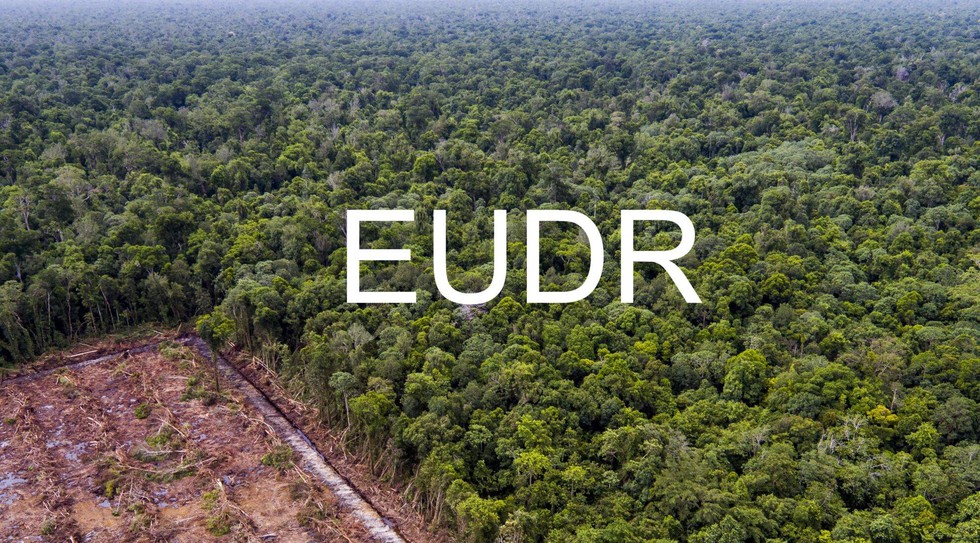
About European Union Deforestation Regulation (EUDR):
- It was scheduled to commence on 30 December 2024.
- It has been introduced to limit the EU market’s impact on global deforestation/forest degradation and biodiversity loss, promote deforestation-free supply chains, reduce the EU’s contribution to greenhouse gases (GHG) emissions, and protect human rights and the rights of indigenous people.
- Under the EUDR, certain products for export to the European Union (EU) will have to meet new rules relating to the land on which they were produced.
- Commodities targeted by the EUDR are:
- Cattle (including beef)
- Cocoa
- Wood
- Coffee
- Oil Palm
- Rubber
- Soya
- It also extends to a range of relevant products derived from these commodities, such as leather, chocolate, and paper.
- Exporters will need to prove that these goods/products do not originate from land where forests haven't been cut since Jan. 1, 2021, regardless of whether the deforestation was legal in the countries of origin.
- They will need to provide clear evidence to EU operators and EU traders to support this.
- Small businesses further down the supply chain are subject to the same obligations and retain legal responsibility if regulations are violated.
- But they are not liable for due diligence for parts of their products that were already subject to review.
- Failure to comply can result in financial penalties and restricted access to the EU market.
- Country Benchmarking:
- The EUDR will also have a country benchmarking system. This will determine the deforestation and degradation risk of each nation.
- Nations will be classed on a 3-tier system, from low-risk to high-risk.
- A nation’s risk classification will establish the level of scrutiny by the EU. This includes the proportion of consignments inspected by the relevant authorities.
2. Joint United Nations Programme on HIV/AIDS (UNAIDS)?

About Joint United Nations Programme on HIV/AIDS (UNAIDS):
- It is an innovative joint venture of the United Nations family established in 1994.
- It leads and inspires the world to achieve its shared vision of zero new HIV infections, zero discrimination, and zero AIDS-related deaths.
- UNAIDS unites the efforts of 11 UN organizations—UNHCR, UNICEF, WFP, UNDP, UNFPA, UNODC, UN Women, ILO, UNESCO, WHO, and the World Bank—and works closely with global and national partners towards ending the AIDS epidemic by 2030 as part of the Sustainable Development Goals.
- UNAIDS fulfils its mission by:
- Uniting the efforts of the United Nations system, civil society, national governments, the private sector, global institutions and people living with and most affected by HIV;
- Speaking out in solidarity with the people most affected by HIV in defense of human dignity, human rights, and gender equality;
- Mobilizing political, technical, scientific, and financial resources and holding ourselves and others accountable for results;
- Empowering agents of change with strategic information and evidence to influence and ensure that resources are targeted where they deliver the greatest impact and bring about a prevention revolution; and
- Supporting inclusive country leadership for sustainable responses that are integral to and integrated with national health and development efforts.
- It leads the world’s most extensive data collection on HIV epidemiology, programme coverage and finance and publishes the most authoritative and up-to-date information on the HIV epidemic—vital for an effective AIDS response.
- The Joint Programme is coordinated by the UNAIDS Secretariat, headquartered in Geneva, Switzerland.
3. United States Commission on International Religious Freedom (USCIRF)
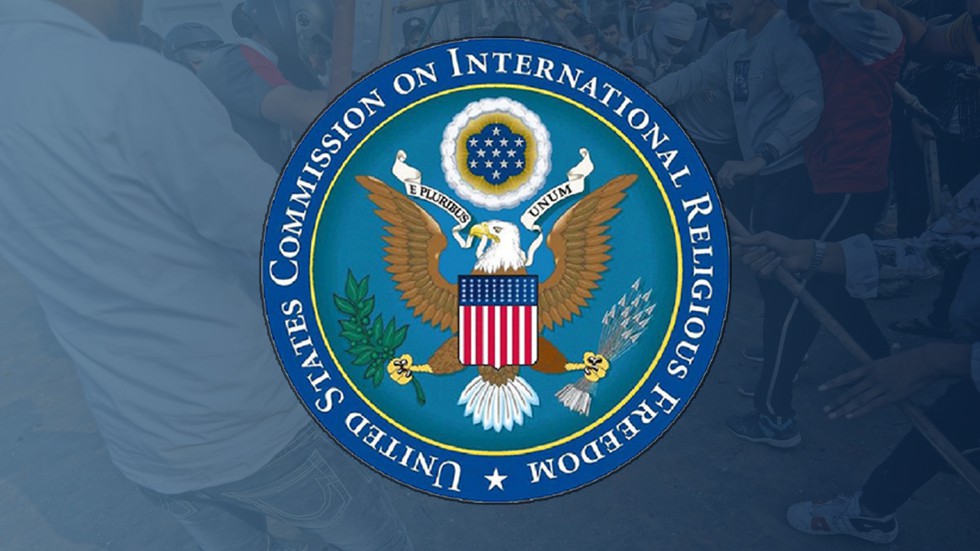
About United States Commission on International Religious Freedom (USCIRF):
- It is an independent, bipartisan U.S. federal government agency.
- It was created by the 1998 International Religious Freedom Act (IRFA), as amended.
- Functions: USCIRF reviews the facts and circumstances of violations of religious freedom internationally and makes policy recommendations to the President, the Secretary of State, and Congress.
- Composition:
- USCIRF's nine Commissioners are appointed by either the President or Congressional leaders of each political party.
- Their work is supported by a professional, nonpartisan staff.
- USCIRF issues an annual report that assesses the US government’s implementation of IRFA, highlights “Countries of Particular Concern” engaging in severe religious freedom violations, documents the conditions of religious freedom in many countries, and provides policy recommendations.
- It uses international standards to monitor religious freedom violations globally.
- Article 18 of the Universal Declaration of Human Rights affirms that:
- “Everyone has the right to freedom of thought, conscience, and religion; this right includes freedom to change his religion or belief, and freedom, either alone or in community with others and in public or private, to manifest his religion or belief in teaching, practice, worship, and observance.”
4. Vaikom Satyagraha
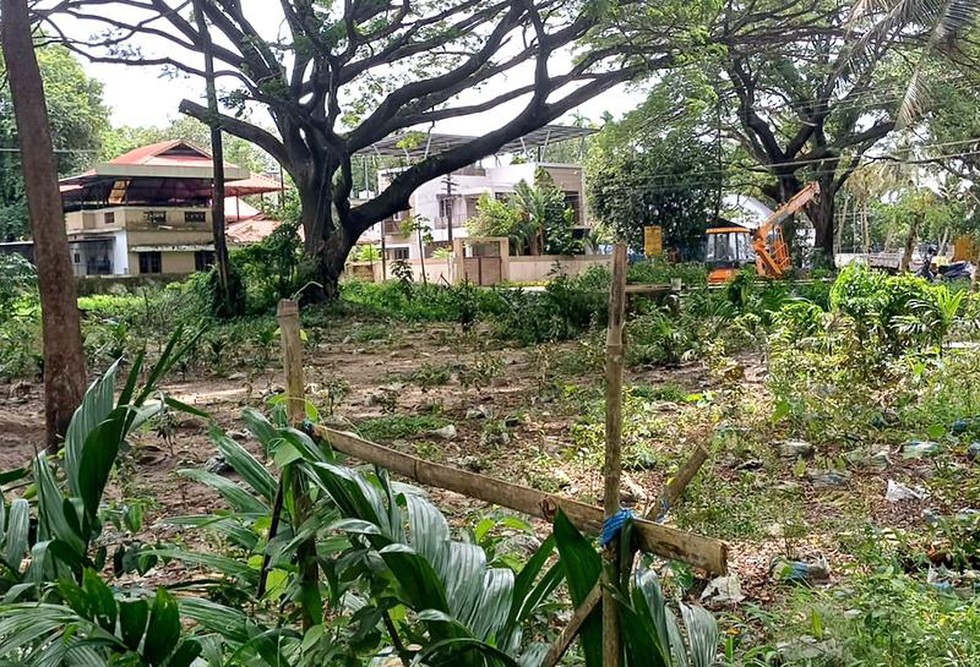
About Vaikom Satyagraha:
- It was a social reform movement which originated and took its place at Vaikom, then part of the princely state of Travancore, in Kottayam district of Kerala, between 1924 and 1925.
- It was the dawn of temple entry movements in India.
- Background:
- The Vaikom Mahadevar Temple was the epicenter of the town, and Dalits were prohibited from entering the temple premises or even using the road that encircled the temple.
- In the All India Congress Committee (AICC) meeting in Kakinada in 1923, K Madhavan,along with Sardar Panikkar and KP Kesava Menon, submitted a petition to the Travancore legislative council.
- The petition sought to grant the right to temple entry and worship of gods for all sections of the society, irrespective of caste, creed, and community.
- During a tour of the region by leaders like Kelappan, a demand was made to allow everyone to use the road, but the temple authorities refused.
- This refusal led to the commencement of Satyagraha.
- The Satyagraha was led by prominent leaders such as Kelappan, T. K. Madhavan, and K. P. Kesava Menon, among others.
- Young volunteers from all over Kerala joined the Satyagraha to fight against untouchability.
- A lot of prominent political and social personalities, including Mahatma Gandhi, had a role in the satyagraha.
- Mahatma Gandhi supported the movement unconditionally and visited Vaikom in 1925.
- Periyar E.V. Ramasamy arrived in Vaikom on April 13, 1924, after several of the movement’s leaders were jailed and he provided crucial leadership to it.
- Sree Narayana Gurualso extended his support and co-operation to the Vaikom Satyagraha.
- Despite the authorities' attempts to suppress the Satyagraha, it ultimately succeeded in opening the temple roads to everyone.
- The Satyagraha came to a close on November 23, 1925, a total of 604 days after it began in March 1924.
- In another three years, the Travancore government would order that temple roads across the state be opened to all.
5. Pygmy hog

About Pygmy hog:
- It is the smallest and rarest species of wild pig in the world.
- It is one of the very few mammals that build its own home, or nest, complete with a ‘roof’.
- It is an indicator speciesas its presence reflects the health of its primary habitat, tall and wet grasslands.
- Habitat:It prefers undisturbed patches of grassland dominated by early succession riverine communities, typically comprising dense tall grass intermixed with a wide variety of herbs, shrubs and young trees.
- Currently, the viable population of this pig in the wild is in the Manas Tiger Reserve in Assam.
- Conservation status:
- IUCN:Critically Endangered
- The Wildlife Protection Act, 1972:Schedule I
Key facts about Manas National Park
- It is located in the state of Assam. It is contiguous with the Royal Manas National Park in Bhutan.
- It is a national park, UNESCO Natural World Heritage site, a Project Tiger reserve, an elephant reserve and a biosphere reserve.
- Rivers: The Manas River passes through this park
- Flora:It contains some of the largest remaining grassland habitats in the sub-Himalayan grassland ecosystems.
- Fauna:It is known for its rare and endangered endemic wildlife such as the Assam roofed turtle, hispid hare, golden langur and pygmy hog.
6. International Energy Efficiency Hub

About International Energy Efficiency Hub:
- It is a global platform dedicated to fostering collaboration and promoting energy efficiency worldwide.
- It was established in 2020 as the successor to the International Partnership for Energy Efficiency Cooperation (IPEEC), in which India was a member.
- The hub brings together governments, international organizations, and private sector entities to share knowledge, best practices, and innovative solutions.
- Member countries: Sixteen countries have joined the Hub (Argentina, Australia, Brazil, Canada, China, Denmark, European Commission, France, Germany, Japan, Korea, Luxembourg, Russia, Saudi Arabia, United States and United Kingdom).
- Implementing agency: The Bureau of Energy Efficiency (BEE), the statutory agency, has been designated as the implementing agency for the Hub on behalf of India.
- BEE will play a crucial role in facilitating India's participation in the Hub's activities and ensuring that India's contributions align with its national energy efficiency goals.
- Significance:
- India will gain access to a vast network of experts and resources, enabling it to enhance its domestic energy efficiency initiatives.
- The country will also contribute to global efforts to address climate change by promoting energy-efficient technologies and practices.
- The country's participation in this global platform will help to accelerate the transition to a low-carbon economy and improve energy security.
- This move solidifies India's commitment to sustainable development and aligns with its efforts to reduce greenhouse gas emissions.
7. PM Internship Scheme
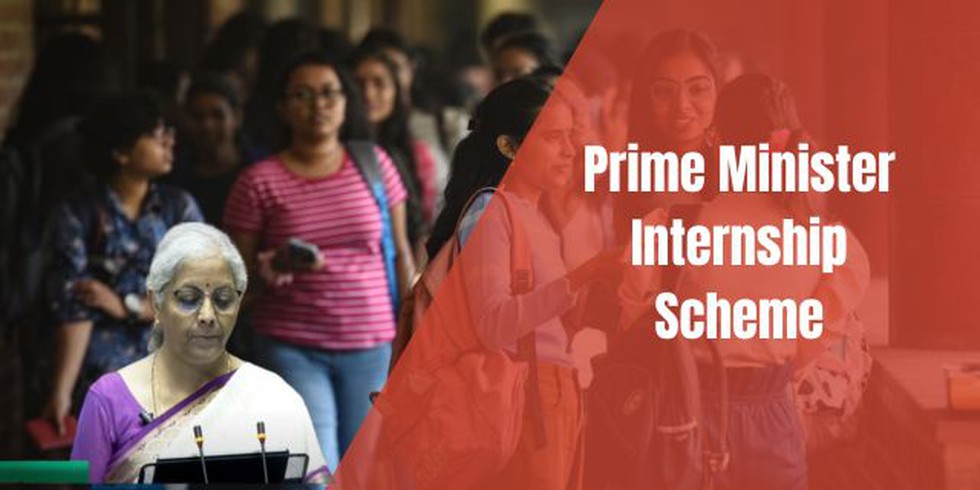
About PM Internship Scheme:
- It will enhance youth employability in India by offering them hands-on exposure to real-world business environments.
- The scheme represents a transformative opportunity to bridge the skills gap and drive sustainable growth in India.
- Aim: The scheme aims to provide internship opportunities to one crore youth over five years, in the top 500 companies.
- The pilot project will be implemented through an online portal managed by the Ministry of Corporate Affairs (MCA).
- A monthly stipend of ₹4,500 will be provided to the interns from the central government via DBT (Direct Benefit transfer), with an additional ₹500 offset provided by the company’s Corporate Social Responsibility (CSR)
- They will also be provided a one-time grant of Rs 6,000 upon joining and insurance coverage under PM Jeevan Jyoti Bima Yojana and PM Suraksha Bima Yojana.
- Internship period: One year
- Who is eligible for the scheme?
- Candidates aged between 21 and 24 years who are not engaged in full-time employment are eligible for the one-year internship programme.
- Internships are available to those who have passed class 10 or higher.
- Individuals from families with government jobs are excluded.
- It is not open to post-graduates.
- A candidate who has graduated from premier institutes such as IIT, IIM, or IISER, and those who have CA, or CMA qualifications would not be eligible to apply for this internship.
- Anyone from a household that includes a person who earned an income of ₹8 lakh or more in 2023-24, will not be eligible.
Benefits of the scheme
- It will provide on-the-job training to youth and exposure to real-life work environments.
- The scheme will also benefit the industry by creating a pipeline of skilled, work-ready youth who can be employed post-internship both in large as well as micro, small and medium enterprises.
8. International Medical Device Regulators Forum

About International Medical Device Regulators Forum:
- The IMDRF was established in 2011.
- It is a group of global medical device regulators whose aim is to speed up the adoption of international medical device regulatory harmonisation and convergence.
- Members: Its members include national regulatory authorities of the U.S., Australia, Canada, the European Union, Japan, the United Kingdom, Brazil, Russia, China, South Korea, Singapore and the World Health Organization (WHO).
- The membership helps to harmonize regulatory requirements across the globe, which reduces the complexity for manufacturers and helps in safeguarding public health by promoting collaboration, harmonizing regulations, and promoting convergence.
- It also helps to support innovation and timely access to new medical devices.
- Significance to India
- India will participate in IMDRF Open Sessions to have an information exchange on technical topics with other regulators, discuss on latest medical device regulatory strategies and trends, provide feedback on India’s experience and perspectives.
- This will strengthen the CDSCO’s medical device regulatory system, helping meet emerging technical challenges that are increasingly diverse, to ensure the protection of public health and safety, and continue to maintain the goal of international recognition for its Medical Device regulation.
9. Classical Language
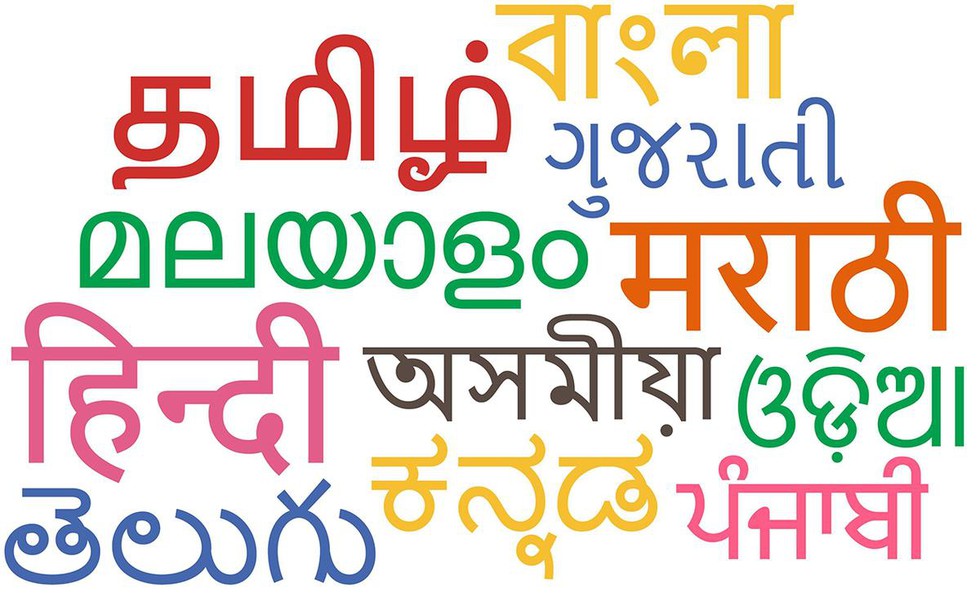
Classical Language Status Criteria:
- The recognition of a classical language is based on criteria established by a Linguistic Experts Committee.
- According to the committee, the following revised benchmarks must be met for a language to be considered "classical":
- High antiquity of (its) early texts/recorded history over a period of 1500- 2000 years.
- A body of ancient literature/texts, which is considered a heritage by generations of speakers.
- Knowledge texts, especially prose texts in addition to poetry, epigraphical and inscriptional evidence.
- The Classical Languages and literature could be distinct from its current form or could be discontinuous with later forms of its offshoots.
- Other Recognised Classical Languages are: Tamil ( 2004), Sanskrit (2005), Telugu( 2008), Kannada (2008), Malayalam( 2013) and Odia (2014).
Benefits of Classical Language Status
- Once a language is designated as classical, the Ministry of Education provides various benefits to promote it, including:
- Two major international awardsannually for scholars of eminence in the language.
- Establishment of a Centre of Excellence for Studiesin the Classical Language.
- Requesting the University Grants Commission (UGC)to create Professional Chairs in Central Universities dedicated to the classical language.


























































































































































.png)
.png)
.png)
.png)
.png)


.png)
.png)
.png)





.png)
.png)






.png)
.png)
.png)
.png)
.png)
.png)
.png)
.png)
.png)

.png)







.png)
.png)


.png)
.png)
.png)


.png)

.png)
.png)





.jpg)

.png)
.png)


.png)

.png)
.png)
.png)

.jpg)

.jpg)


.png)

.png)
.png)
.png)
.png)
.png)
.png)
.png)
.png)
.png)
.png)




.png)

.png)





.png)
.png)
.png)
.png)
.png)
.png)
.png)
.png)
.png)
.png)
.jpg)
.jpg)

.png)
.png)
.png)
.png)
.png)
.png)
.png)
.png)
.png)
.png)
.png)
.png)
.png)
.png)
.png)
.png)
.png)
.png)
.png)
.png)
.png)
.png)



.png)
.png)

.jpg)
.jpg)


.jpg)
.jpg)
.jpg)
.jpg)
.jpg)

.jpg)








.jpg)
.jpg)
.jpg)
.jpg)
.jpg)

















.jpg)
.jpg)







.jpg)


















.jpg)
.jpg)






























































































.jpg)
.jpg)


























.jpg)

.jpg)










.jpg)








.jpg)




.jpg)










.jpg)


















.jpg)












































.jpg)














.jpg)
.jpg)
.jpg)





.jpg)

.jpg)
.jpg)





































































.jpg)


































.jpg)
.jpg)
















































.jpg)












.jpg)


.jpg)




.jpg)
.jpg)
.jpg)

.jpg)
.jpg)
.jpg)
.jpg)

.jpg)
.jpg)
.jpg)

.jpg)
.jpg)
.jpg)
.jpg)
.jpg)
.jpg)
.jpg)
.jpg)

.jpg)


.jpg)
.jpg)
.jpg)
.jpg)
.jpg)
.jpg)
.jpg)
.jpg)
.jpg)
.jpg)











.jpg)
.jpg)





.jpg)
.jpg)
.jpg)
























.jpg)
























.jpg)









.jpg)
.jpg)







.jpg)
.jpg)









































.jpg)
.jpg)
.jpg)
.jpg)
.jpg)

.jpg)
.jpg)
.jpg)
.jpg)
.jpg)


.jpg)
.jpg)
.jpg)
.jpg)
.jpg)

.jpg)
.jpg)
.jpg)
.jpg)
.jpg)
.jpg)
.jpg)
.jpg)
.jpg)
.jpg)
.png)

.png)
.png)

.png)
.png)
.png)
.png)


.jpg)
.jpg)

.jpg)
.jpg)
.jpg)

.png)
.png)
.png)
.png)
.png)
.png)
.png)

.png)
.png)
.png)
.png)
.png)
.png)
.png)
.png)
.png)
.png)





































































-min.png)



.png)




.png)








































